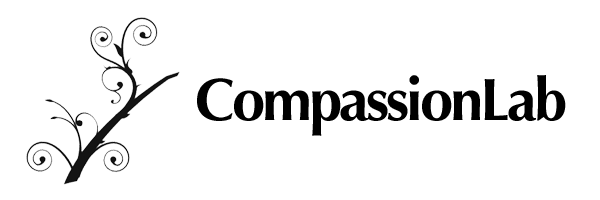Insights and inspiration about compassion at work from members of the CompassionLab and our guests.
Human Relations Free Access Article of the Month
 A special offer from the journal Human Relations makes free public access available for the CompassionLab’s paper: Understanding Compassion Capability.
A special offer from the journal Human Relations makes free public access available for the CompassionLab’s paper: Understanding Compassion Capability.
Free access is available to the public through Human Relations until March 10, 2013.
Human Relations is an international peer reviewed journal, which publishes the highest quality original research to advance our understanding of social relationships at and around work through theoretical development and empirical investigation. To access this offer from Human Relations, visit the link below:
Understanding compassion capability
Jacoba M Lilius, Monica C Worline, Jane E Dutton, Jason M Kanov, and Sally Maitlis
Human Relations 2011; 64 (7): 873–899
http://hum.sagepub.com/
Have something about Understanding Compassion Capability that you want to share?
Let us know by leaving a reply below!
Feeding the wolf of compassion
A Cherokee proverb (from www.snowowl.com):
He said to them, “A fight is going on inside me … it is a terrible fight and it is between two wolves. One wolf represents fear, anger, envy, sorrow, regret, greed, arrogance, self-pity, guilt, resentment, inferiority, lies, false pride, superiority, and ego. The other wolf stands for joy, peace, love, hope, sharing, serenity, humility, kindness, benevolence, friendship, empathy, generosity, truth, compassion, and faith. The same fight is going on inside you, and inside every other person, too.” They thought about it for a minute and then one child asked his grandfather, “Which wolf will win?” The old Cherokee simply replied… “The one you feed.”
By feeding the wolf of compassion, we can see the impact of small acts and begin to understand the extraordinary accomplishment of collective healing, as well as to think more deeply about how organizations build unique capabilities that bring out the best of the human condition.
Defining Compassion
Compassion is the heart’s response to suffering. Compassion — from the roots passio (suffering) and com (with) — means to suffer with another. Compassion is an innate part of human response to suffering, which is comprised of a three-part experience of noticing another’s pain, feeling with another, and responding in some way. In this article we explore the meaning of compassion for work organizations by looking at the history of compassion and tracing its relationship to human communities over time. We suggest ways to think about compassion as a collective process as well as an individual characteristic.
Read the abstract
From AMERICAN BEHAVIORAL SCIENTIST, Vol. 47 No. 6, February 2004 808-827.
“Compassion occupies a prominent role in the history of modern society, implicated in the creation and sustenance of human community (Clark, 1997; Nussbaum, 1996, 2001). Seen as virtuous and contributing to personal and social good (Blum, 1980; Nussbaum, 2001; Solomon, 1998; Wuthnow, 1991), compassion lies at the core of what it means to be human (Himmelfarb, 2001; Wuthnow, 1991). Discussions about the meaning of compassion as a human experience date back over two thousand years, spanning disciplines such as religion, philosophy, and sociology. Through early philosophical accounts to more contemporary depictions, the notion of compassion has remained remarkably constant (Nussbaum, 1996). Similarly, despite fundamental differences in philosophy and tradition, all major religions emphasize the importance of compassion. Judaism, for example, mandates to emulate God in his attribute of compassion (Sears, 1998), and Buddhist philosophy considers that the basic nature of human beings is to be compassionate (Dalai Lama, 1995). The Biblical tradition, too, teaches compassion as “a duty to divine law, as a response to divine love, and a sign of commitment to the Judeo-Christian ethic” (Wuthnow, 1991, p. 50). Compassion is a fundamental and timeless part of human existence.
Compassion is also an essential, yet often overlooked, aspect of life in organizations. Although organizations are frequently portrayed as sites of pain and suffering, they are also places of healing, where caring and compassion are both given and received (Frost, Dutton, Worline, & Wilson, 2000; Kahn, 1993). Compassionate acts can be found at all levels in an organization, from leaders who buffer and transform the pain of their employees, to officeworkers who listen and respond empathically to their colleagues’ troubles (Frost, 2003). Compassion in organizations makes people feel seen and known; it also helps them feel less alone (Frost et al. 2000; Kahn, 1993). Moreover, compassion alters the “felt connection” between people at work (Frost et al., 2000) and is associated with a range of positive attitudes, behaviors, and feelings in organizations (Dutton, Frost, Worline, Lilius, & Kanov, 2002; Lilius et al., 2003). Research and writing on compassion in organizations reveals it as a positive and very powerful force.”
Read the entire paper
Compassion Organizing
Pain and suffering, though often unspoken, are ubiquitous in work organizations. Sometimes the work of the organization itself becomes painful, while at other times pain comes from tragic and unexpected events in employees’ lives. Pain and loss, though they are inevitable parts of people’s experience, are not within the usual purview of studies of organization. This paper takes up the topic of organizing to address compassion. While it is easy to see compassion as an individual concern, it is also crucial to see it as a collective concern. In this paper, we consider compassion as a systemic organizing process manifest in dynamics that unfold over time. We propose a model of compassion organizing to describe how compassionate responses are activated, mobilized, and organized through time.
Read Abstract
From Administrative Science Quarterly, 51 (2006): 59–96
“Organizations are often faced with situations in which their members suffer. Natural disasters (e.g., floods, earthquakes, and hurricanes), human-made disasters (e.g., accidents and errors), personal tragedies (e.g., death, illness, and divorce), and job stressors (e.g., layoffs and injuries) are just some sources of organizational members’ pain (Frost, 2003). While organizations have the opportunity to respond to this pain, not all do so, nor do it well. When individuals in organizations notice, feel, and respond to human pain in a coordinated way, we call this process compassion organizing. Compassion organizing in response to unexpected and painful events varies in how effective it is across organizations. For example, in the wake of 9/11/2001, firms responded very differently to the unexpected pain of human loss and devastation. Gittell et al. (2006) compared ten airlines’ response to the events of 9/11 and concluded that relational reserves and financial reserves explained differences in adaptation to this painful jolt. As in Meyer’s (1982) study of hospitals’ response to a doctors’ strike, features of the organization helped to predict the patterns of organizational responding. While previous research has suggested that organizational routines (Zollo and Winter, 2002) and values (Bansal, 2003) may also explain responses to unexpected events, it does not address how features of the organizational context interrelate to explain patterns of organizing. When the unexpected events are marked with emotion, as in human suffering, the process of organizing to alleviate pain is not well understood. Organizational researchers have not explained how responding to an unexpected, painful event is spontaneously organized, nor how and why some patterns of compassion organizing emerge while others do not, and some are more effective than others.”
Read the whole paper
Contours and Consequences
In this paper, we use a combination of narrative and survey methods to explore the contours and consequences of compassion at work. Stories of compassion at work provide testimony to its power in cultivating positive identification with the workplace and with one’s co-workers. Survey findings suggest that the experience of compassion at work is positively related to people’s commitment to the organization and to their positive emotions at work. Taken together, these findings show that the expression of compassion is one way in which people make sense of the organization where they work and is an important moment for making sense of who we can be at work and how we can relate with our co-workers.
Read the abstract
From Journal of Organizational Behavior, 29, 193–218 (2008)
“Although the study of compassion has a long tradition in religion, medicine, and sociology, it has a relatively short history in organizational behavior (Frost et al., 2006). Only recently have we begun to learn about the positive effects of compassion at work or the organizational conditions under which it arises. The impact of compassion was initially revealed by employees who described how valued and connected they felt after receiving compassionate acts from others in the organization (Dutton et al., 2002; Frost et al., 2000). Using an in-depth case study to examine the occurrence of a large-scale compassionate response, Dutton, Worline, Frost, and Lilius (2006) showed that whether the social coordination of compassion is activated and mobilized depends on an organization’s social architecture and the agency of those in the organization. Despite these insights, many questions about the nature and impact of compassion at work still remain unanswered, such as the kinds of suffering that trigger acts of compassion at work, who gives and receives it, the different forms compassion takes in organizations, and consequences for those who receive, witness, or participate in delivery of compassion.
In the present paper, we begin to address these questions through two complementary studies. In so doing, we surface the painful situations that are part of the tapestry of everyday organizational life and illuminate the informal kinds of compassionate responses that often go unnoticed by those further from the site of suffering. These studies together result in a view of the deep connections that exist in work organizations but are often missed in studies that regard workplaces simply as sites of economic transactions or task and service execution.”
Read the whole paper
Compassion Capability
What makes one group of people highly able to coordinate compassionate responses to suffering in their midst, while another group may fail to take notice at all, and another may exhibit a minimal response? In this paper, we take up this question by looking closely at one organizational unit that exhibited an extraordinary capacity to respond to the suffering of its members. We found a work unit able to direct their resources towards suffering in a highly creative and resourceful manner. The importance of everyday activities shines through these research findings, showing that small everyday actions provide a foundation for high-quality connections between employees and have the power to increase or decrease their collective ability to notice, feel, and respond to suffering.
Read the abstract
From: Human Relations (2011), 64(7), 873–899.
“Suffering is an inevitable, ubiquitous, yet often overlooked, aspect of organizational life (Frost, 2003). At any given time, some organizational members will be struggling with the kinds of personal challenges described in the opening quote, such as the illness or loss of loved ones, relationship breakdown or financial struggles. Suffering may also accompany organizational changes such as layoffs or restructuring, or being mistreated or devalued by work colleagues (see Driver, 2007). Reactions to such suffering can vary widely across organizations, passed by with a nod or indifference in some (Delbecq, 2011; Hazen, 2003, 2008), yet addressed with compassion in others (Dutton et al., 2006; Kanov et al., 2004). While our understanding of individual compassion as a response to a single instance of suffering has grown considerably in recent years (Goetz et al., 2010; Lilius et al., 2011; Nussbaum, 1996), little research examines what enables members of a collective to repeatedly act with compassion in response to different instances of suffering. We explore this question through an inductive interview-based study of a unit that demonstrates this ‘compassion capability’, and theorize the relational micro-foundations that foster such a capability in a workplace where attention is divided, and time and performance pressures abound. In this article, we adopt a practice lens in looking to the situated, everyday activities in a community (Orlikowski, 2002) that undergird its collective capability for compassion. Building on a conceptualization of compassion as a tri-part human experience marked by: 1) noticing or attending to another’s suffering, 2) feelings that are other-regarding and resemble empathic concern, and 3) responses aimed at easing the suffering (Batson, 1994; Clark, 1997; Frost et al., 2000; Kanov et al., 2004; Reich, 1989; Solomon, 1998), we define compassion capability as the reliable capacity of members of a collective to notice, feel and respond to suffering. This definition of compassion capability draws directly on Dosi et al’s (2000) description of organizational capability as members’ ability to consistently produce a collective achievement through their actions. Through a careful empirical examination of one ‘extreme’ case (Eisenhardt, 1989), we elaborate a theory that explain the mechanisms through which certain practices build a unit’s compassion capability (Hedstrom and Swedberg, 1998).”
Read the whole paper





